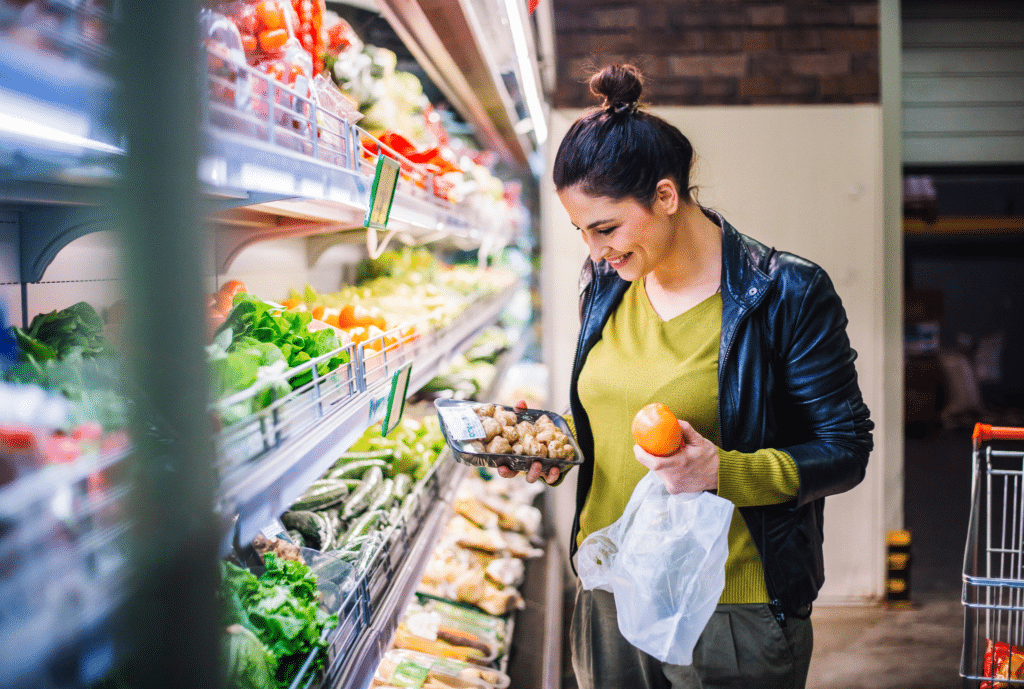Shopping for groceries has changed dramatically in the past decade, from ordering online to in-store pick up and delivery. As technology continues to evolve, so does how we shop for groceries. In this article, we will explore four trends and technologies revolutionizing grocery retail today and shaping the future of grocery shopping.
Contents
Trend #1: Automation
Automation is the future of grocery retail. The retail industry’s use of robotics, artificial intelligence (AI), and machine learning (ML) has increased over the past few years. According to several industry-leading mapping platforms, like MappedIn, a trend expected to grow in 2023 is using grocery store maps, 3D indoor mapping, and in-store wayfinding solutions to optimize in-person shopping experiences. These technologies offer customers an easy and efficient way to navigate stores, find products quickly, and save time.
In-store maps help shoppers quickly locate items by providing a detailed overview of the store’s layout. They also enable retailers to analyze customer movement, understand popular sections and zones within stores, and adjust product placement accordingly. With 3D maps taking things further by providing customers with virtual tours of a store before they even enter it, this technology allows consumers to plan their shopping trips by exploring different sections or aisles.
Trend #2: Digitalization
As technology advances, so does how we shop for our daily needs. The future of grocery retail is rapidly changing, and digitalization is at the forefront of this transformation.
With the rise of e-commerce and mobile technology, consumers can purchase groceries online and have them delivered straight to their doorstep. This convenience allows consumers to save time and avoid long queues at checkout counters. In addition, retailers are using AI-powered technologies such as chatbots to provide personalized recommendations based on customers’ preferences.
Digitalization also opens up new opportunities for retailers to gather data on consumer behavior, which can be used to tailor marketing campaigns and promotions that resonate with customers on a personal level.
Trend #3: Personalization
Consumers are no longer satisfied with generic shopping experiences – they want stores that cater to their unique needs and preferences. From mobile apps that track purchase history to in-store sensors that analyze behavior, retailers use data to create hyper-personalized customer experiences.
One example of this trend in action is using machine learning algorithms to predict what products a customer might want based on their past purchases. This technology can analyze everything from brand preferences to dietary requirements, allowing retailers to offer targeted promotions and suggest complementary items at checkout.
By leveraging data and new technologies, retailers can build stronger customer relationships while boosting sales and loyalty. In the years ahead, we can expect even more innovative approaches as personalization continues to evolve and become increasingly sophisticated.
Trend #4: Sustainability
As consumers become more conscious of their environmental impact, they demand eco-friendly options from their favorite grocery stores. Grocery retailers must adapt and find ways to reduce waste, use renewable resources, and promote sustainable farming practices.
In response, many forward-thinking grocery retailers are adopting innovative approaches like biodegradable packaging solutions for products or offering discounts on reusable bags at checkout counters. They’re also partnering with local farmers who use sustainable methods of agriculture or investing in solar power to reduce their carbon footprint.
Conclusion
The future of grocery retail is full of exciting possibilities for both businesses and consumers. From improved delivery services to increased automation, new technologies are making shopping for groceries more straightforward, quicker, and enjoyable than ever before.
With these advances comes an opportunity for businesses to provide a better customer experience and for consumers to benefit from greater convenience. Even as the industry continues to evolve, it’s clear that grocery retailers must stay ahead of the curve to remain competitive and meet consumer needs.

